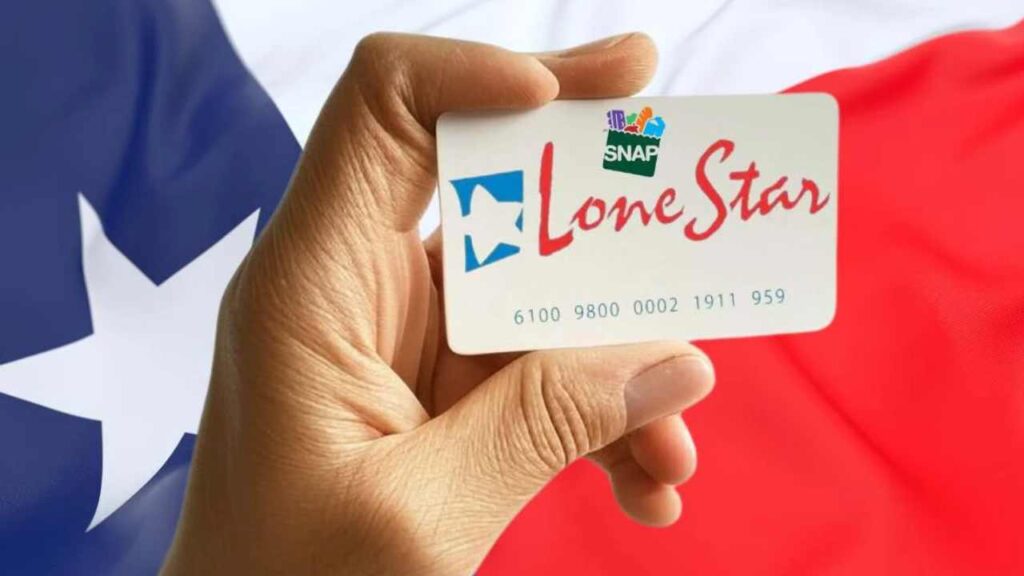Starting Wednesday, October 1, the Supplemental Nutrition Assistance Program (SNAP) in Texas is giving out a benefit bump. This bump is a yearly cost of living raise by the United States Department of Agriculture (USDA).
It affects how much does the SNAP benefits help those in need in the state will get. The change is based on data from the USDA’s Thrifty Food Plan, which is a list of food costs that shows what is needed to stay healthy for less. It looks at prices for food and inflation levels across the country.
New maximum SNAP benefits in Texas
The new benefits set the maximum benefit for a family of four at $994 per month, an increase from the previous amount of $975. For single-person households, the maximum is now $298 per month. Larger families of eight can access a maximum of $1,789. Each additional member in larger households adds $218 to the total family benefit.
Here are the revised SNAP benefit amounts after the increase
- 1 person: $298 (an increase of $6)
- 2 people: $546 (an increase of $10)
- 3 people: $785 (an increase of $17)
- 4 people: $994 (an increase of $19)
- 5 people: $1,183 (an increase of $25)
- 6 people: $1,421 (an increase of $31)
- 7 people: $1,571 (an increase of $35)
- 8 people: $1,789 (an increase of $33)
- Each additional person: +$218
These values represent the upper limits of aid. The actual allocation each household receives is determined by an assessment of their monthly net income, allowable deductible expenses, and household size. The update aims to maintain the purchasing power of benefits in the face of rising food prices.
The implementation of the new amounts is automatic for current beneficiaries. No action is required by households already receiving benefits to see the adjustment reflected in their accounts. The additional funds will be available on Electronic Benefit Transfer (EBT) cards on the distribution dates established for each case.
Changes in job requirements
Alongside the benefit increase, new federal work requirements for a specific segment of the beneficiary population continue to be implemented. These regulations, which took effect on September 1, 2025, primarily affect Able-Bodied Adults Without Dependents (ABAWD).
As reported by the DHS, these rules stipulate that adults ages 18 to 54 without dependent children must demonstrate participation in work, education, or training activities. The specific requirement is a minimum of 20 hours per week, equivalent to 80 hours per month. Eligible activities include paid employment, vocational training, higher education, or approved volunteer programs.
Failure to comply with this requirement may result in a restriction on eligibility for benefits. Individuals who fail to meet the hours requirement without an approved exemption may have their access to SNAP restricted to a maximum of three months of benefits within a three-year period. Exemptions exist for circumstances such as disability, pregnancy, or being under medical care.
Projected expansion of requirements for SNAP
Beginning November 1, 2025, the scope of these work requirements will be expanded to include new demographic groups. This expansion will include adults ages 55 to 64, as well as parents and guardians whose minor child is 14 or older. Certain groups of veterans and former youth in care who meet the established criteria will also be included under these rules.
This measure represents a significant change in nutrition assistance policy, extending work participation obligations to segments of the population that were previously exempt. The administration has stated that the goal is to promote economic self-sufficiency and labor market reintegration.
Application process: Gettins SNAP benefits
Texas residents who wish to apply for SNAP benefits can begin the process in two main ways: through the online portal managed by Feeding Texas, or through the official Texas Health and Human Services system. The online application is the method touted for its 24-hour accessibility.
Once the application is submitted, the Department of Human Services has a maximum of 30 days to evaluate eligibility and notify the applicant of its decision. During this period, additional documentation may be required to verify the declared financial and family situation.
In situations classified as urgent need, households that demonstrate they meet specific criteria of low income or extremely limited resources may access expedited benefits. These are granted within a reduced timeframe of up to five business days from the request, subject to verification of the urgency.
EBT card use and assistance
Once the application is approved, recipients receive an EBT ACCESS card. This device functions similarly to a standard debit card and is used exclusively to purchase eligible food items at authorized establishments. Eligible products include a wide range of groceries for preparation and consumption at home, generally excluding hot foods, alcohol, or non-food items.
Applicants have the option to designate an authorized representative. This person, who can be a family member, friend, or social worker, is authorized to assist with the benefits management process and even make purchases on behalf of the beneficiary using the EBT card, subject to formal authorization.
For application status inquiries, EBT card issues, or eligibility questions, DHS has set up a helpline at 1-800-692-7462. Alternatively, individuals can visit their local county assistance office in person or by phone for specific guidance.
